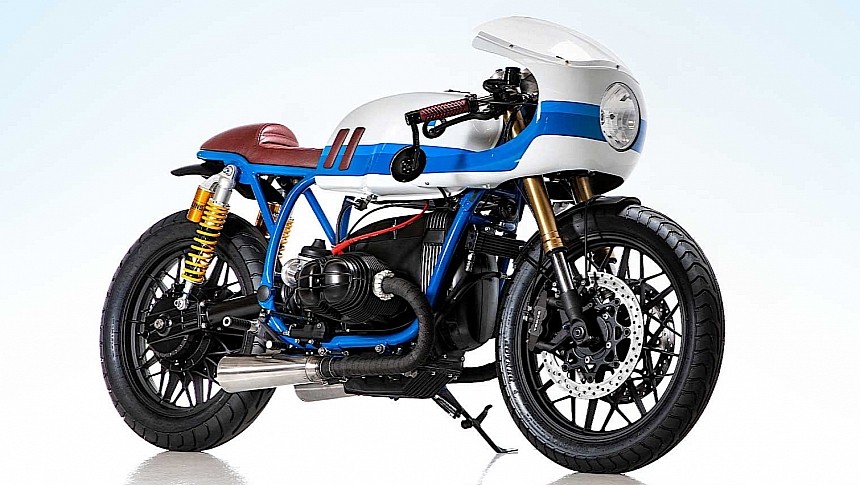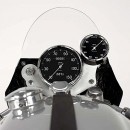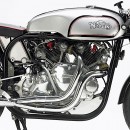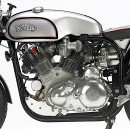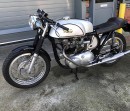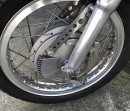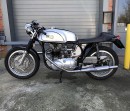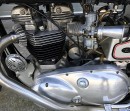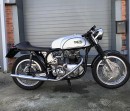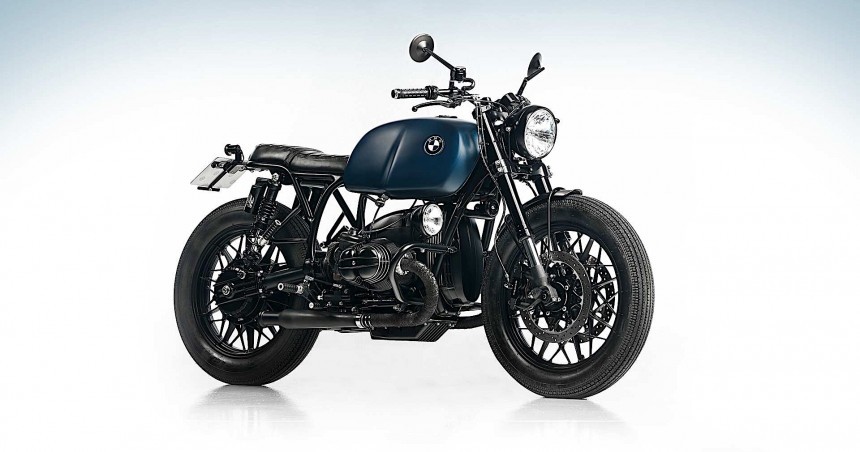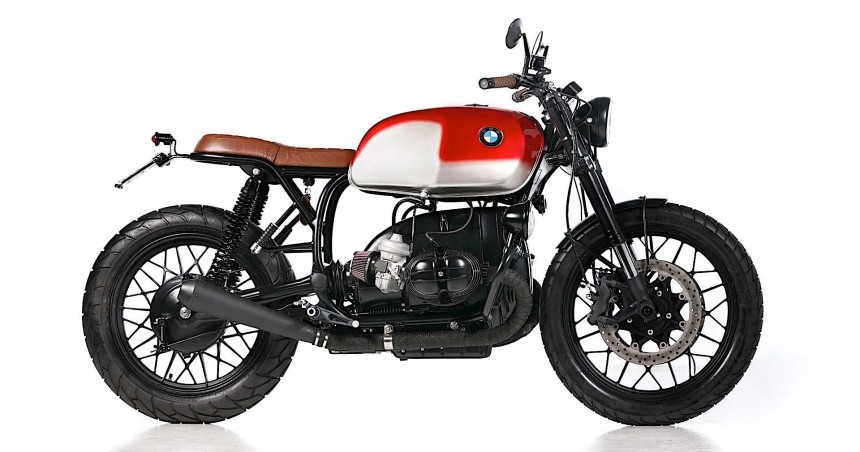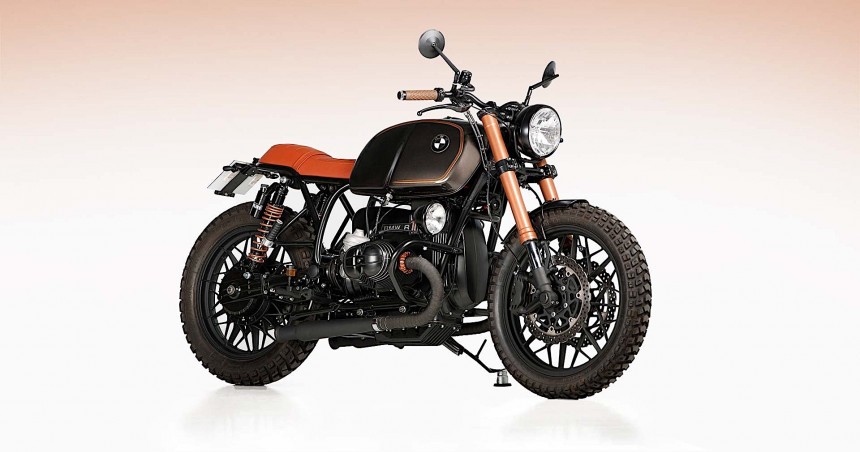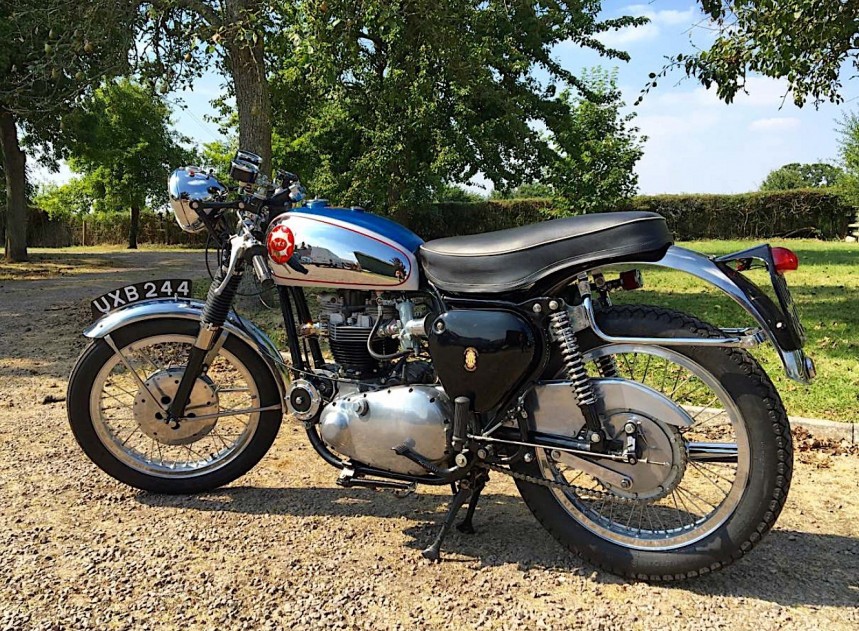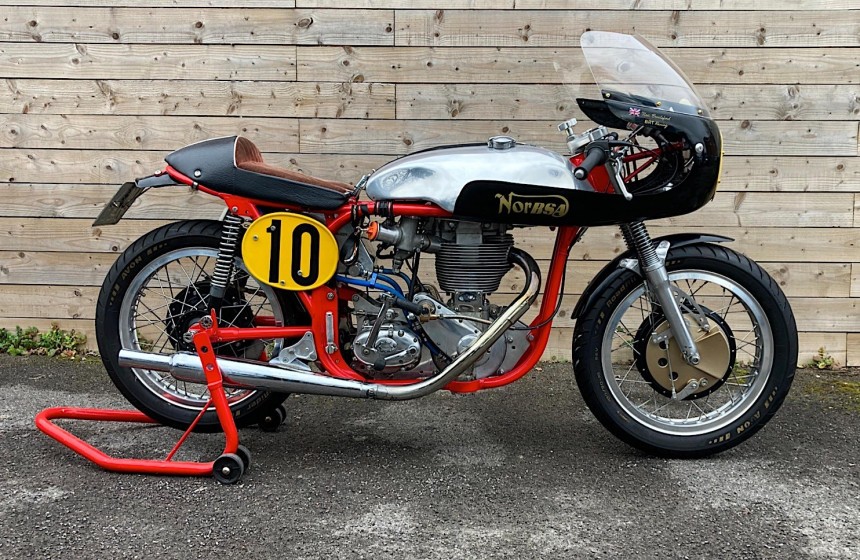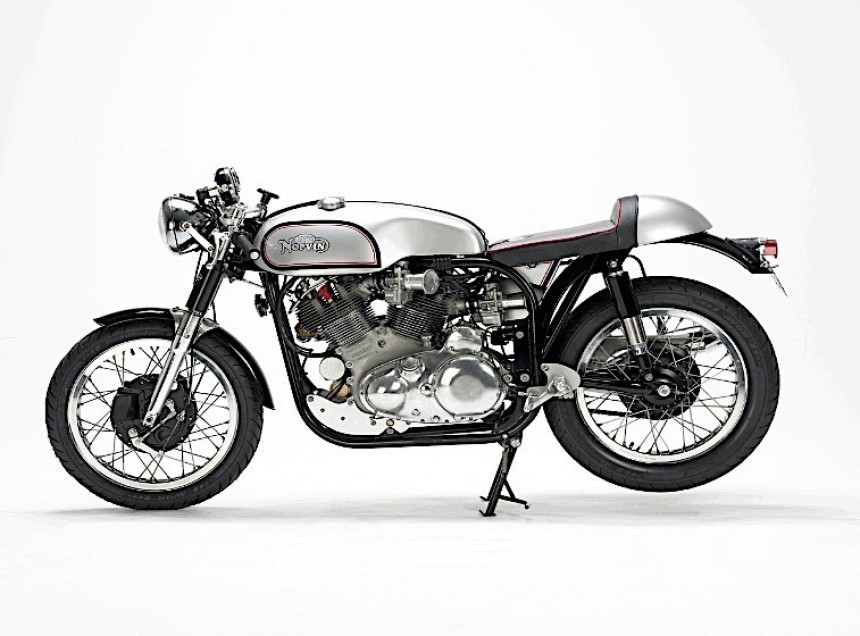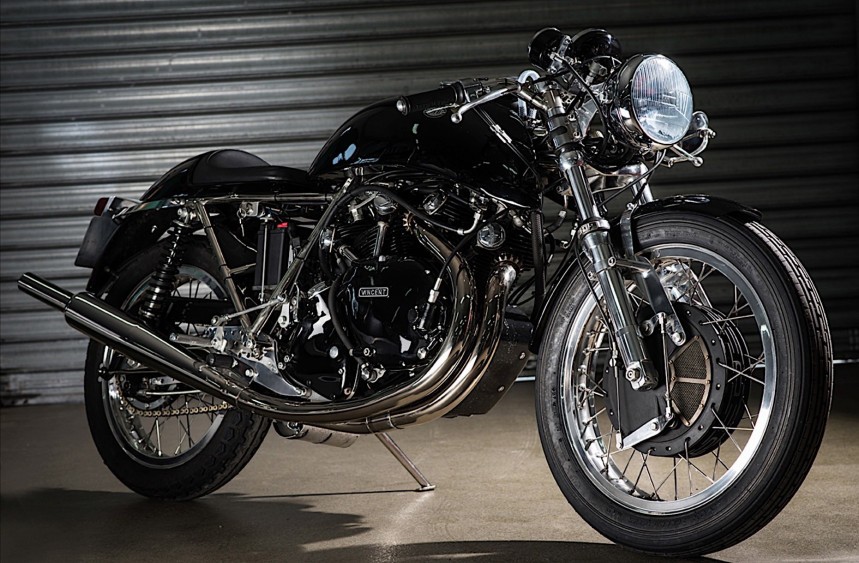I'm guessing no one ever tried to see whether there are more car lovers out there than there are motorcycle fans. But one look, even superficial, and what both sides do with the vehicles they love makes it instantly clear moto guys and gals win by a landslide in at least one respect: the number and diversity of customization styles.
Sure, cars do get modified by many, but the modding bug seems to be running a lot more rampant in the motorcycle industry. There seem to be a lot more custom shops for bikes, the products they make keep rolling in what seems to be an unstoppable deluge, and, most importantly, when it comes to the custom industry garages and styles, they have influenced bike makers to adapt their offering in ways that don't exist in the car world.
You only need to take a custom motorcycle style called cafe racer as a reference. It dates back to the Britain of the 1960s and a subculture born there called Rocker, or leather boys, or Ton-Up boys. That would be the teens and youngsters of the decade, not necessarily reach but aspiring, who sought refuge in two-wheeled machines more as a means to express their rebellion rather than their inadaptation to the financial requirements of the age.
These people liked to ride, and they mostly used imperfect and old sports bikes for their daily trips. Unlike today, when you can ride a bike to work while wearing a suit, they did so in leather jackets and mostly as a pastime.
One of their favorite pastimes was hanging around cafes, and they often switched locations depending on needs and wants. They took their bikes with them, but for some reason, it occurred to them a stock motorcycle doesn't get you from café to café fast enough.
So they started stripping down their rides to make them faster and easier to handle. They were not meant or necessarily good for long runs, but they got raced by their owners to where they wanted to do be (cafes, of course) fast and in style.
And so the café racer term was born. It stood at first a moniker for production bikes modified on the go, it then turned into a proper custom movement that modified production bikes to the requirements of the genre, and ultimately engulfed bike makers themselves, who decided this was a milking cow fat enough for them to profit too. So they started making café racers right off the factory floor.
Quicker than you can have a coffee, the style spread globally, becoming a phenomenon for bikers. It even landed in the U.S., where for a while people fell in love with them. Due to the influence of the local bike makers, though, café racers never caught on here in the same way they did over in Europe and elsewhere.
Like many other custom bike styles out there, café racers born at the hands of individuals and garages bet their money on minimalism and functionality. It rarely happens for serious alterations to be made to the engine (bike customizers seldom mess with the powertrain), but visually all hell breaks loose.
Because the style is a matter of subjective interpretation, it's very hard to list a strict set of rules a café racer must abide by to actually be a… café racer. But there are several commonalities one can almost always bet to find on such a motorcycle.
The first important trait would be a stripped-down, bare-minimum appearance. Two wheels, a single headlight, a seat just for one, clip-on handlebars, and rear-set footrests – that's all a bike needs to operate for trips between cafes. They have no need for side covers, so the engine lies exposed, or a cover for the chain, so that's in plain view as well. Usually there is also no need for fenders – and when they do exist, they're shrunken down to the smallest possible size.
The above modifications are pretty much what any one of us with a minimum of mechanical expertise can do in the personal garage. There have been times though when custom shops have gone overboard and performed a lot more changes, including to the bikes' engines, at times swapping them altogether. And then we have production café racers, made from the get-go with all the might of established companies behind them, but following the guidelines of the style.
Over the years the genre diversified and expanded, being at the time of writing as rich as it ever was. Some of its main attributes, however can be seen in other styles as well, and that gives birth from time to time to some confusion.
For instance, it's difficult at times to tell a café racer apart from a brat because of their many similarities. Simplistically put, though, if a café racer is a stripped-down version of a production bike, the brat is a stripped-down version of a café racer.
When compared to scramblers, the similarities are again rich and confusing. But there is one key difference between the two, one that impacts the bikes' suspension, wheels, and position of the exhaust. That difference has to do with why each of the two bikes was made: whereas café racers are mostly city rides, scramblers have no problem going off the road.
In this piece we're going to have a look at the most extreme and heavily modified café racers of the early years, the ones that have defined the style and are considered bikes in their own rights. The classics of the breed, if you will, many of which can still be found in working order on our roads today.
Important to note before going into it is that given how the genre appeared as a custom style, it's impossible to trace down what kind of bike was converted first, and by whom. That being said, there are a few machines that are considered the pillars of café racers.
Without any actual proof of this fact, many people consider the Triton to be the first true café racer. If you don't know what that is, don't worry, it's not the product of some bike maker you've never heard of.
Triton is a kind of bike born, if you will, on the street. It required British-made Triumph engines to be fitted inside British-made Norton frames. The name, in fact, comprises and mixes the first letters in the names of these two companies.
The hybrid bike was born as the riders of the 1950s, 1960s, and 1970s saw Norton frames as the best ones available, and Triumph engines likewise. Given how the goal of café racers was to be fast, combining the two seemed like the obvious choice.
Generally speaking, no Triton was the same as the other. And I don't necessarily mean that because these bikes looked different depending on who made them, but they also used different engines and frames.
The most common choice was the pairing of a Triumph Bonneville engine with Norton 650 or 750 Featherbed frames. The transmissions tied to them usually came from Norton, while the wheels and everything else, well, the sky was the limit with those ones.
This type of conversion proved so popular that the dealers of the time often offered the hardware one would need to perform the switch, while others, more daring, even sold full-blown Tritons.
Presently the hype around this kind of bike has died down greatly, but there is a company called Triton Motorcycles in the business of still making them. They fit small engines (50cc to 125cc) on freshly made Featherbed frames. They are more scooters than motorcycles in the purest sense.
The name BSA may not mean anything to motorcycle riders of today, but back when café racers were born it was all the craze. The acronym stands for Birmingham Small Arms Company, and it represents a group that made anything from machine guns to buses.
Somewhere in between were motorcycles, something the company was quite famous for. The frames that went into these bikes, of the duplex cradle variety, were considered alluring enough by the custom industry to be borrowed and used on another type of hybrid bike.
This one too used Triumph engines of the parallel-twin variety, and that explains the name of the bike style yet again as a combination of the first letters of the two companies.
Unlike the Triton, which only caught the attention of dealers and custom shops, the Tribsa was impressive enough to have Triumph thinking about making them. That's because in 1973 BSA, Triumph, and Norton-Villiers kind of became the same company.
It's unclear what happened with Triumph's attempt to tap into the café racer segment with factory-made TriBSAs, as no one knows how many of them were made, what happened to them, or why they were dropped.
No one is making TriBSAs on an official level anymore, but older ones can be seen making the rounds in motocross and enduro events.
I'm pretty sure that by now you've got the hang of how these custom café racers came to be, and how they were named: take the frame of one, the engine of another, scramble their names together, and voila, instant cool bike.
NorBSA, obviously, stands for a hybrid between a Norton and a BSA. In this case, the Featherbed frame was retained and inside it a BSA twin-cylinder engine was fitted, resulting in yet another take at what a café racer should be.
This kind of bike was somewhat rarer than the other two mentioned above, but fine examples of it can still be found, some of them in such great condition that they're sold for respectable sums at auctions across Europe. Others can be seen in racing events, battling other café racers.
Another big name in the British motorcycle industry in the years before and after the Second World War was Vincent. You may know the name as back in 1948 a bike it made called Black Shadow became the world's fastest production motorcycle.
Vincent died out in 1959, but at that time the café racer movement was already up and running, and there were enough Vincents around to capture everyone's attention. It means that both Vincent-based café racers came to be, but also a hybrid called NorVin.
NorVin is, naturally, a combination between Norton and Vincent. Norton supplied, as in the case of all other bike hybrids, the frame, while Vincent donated the engines.
Like all the other café racers, these builds were mostly on-offs, but there was attempt to turn them into a sort of series production. The effort is tied to British engineer Tom Somerton, but he too failed, and there is no info today on how many NorVins he was able to build.
In our day and time NorVins are made and sold by a company called JMC Classics. They come as custom frames holding engines with displacements of 1,000cc or 1,200cc.
The bikes Vincent made proved very popular as conversions, and the NorVin was not the only hybrid made from them. Another high-profile construction of this sort is the Egli Vincent.
The bike takes its name after Vincent (duh!) and Fritz Egli, a Swiss motorcycle racer and later in his life maker of motorcycle frames and tuner of motorcycle engines. His interpretation of the café racer was built around a custom frame holding a V-twin engine.
Egli produced some 100 of these bikes during his life, and production was subsequently taken over by Patrick Godet and British motorcycle dealer Slater Brothers. Egli Vincent bikes are still around, being made and sold by the same JMC Classics that makes the NorVin.
The above bikes are only the cherry on the café racer cake, the ones that nearly turned into production versions. Alongside them there are countless one-offs built by unknown hands, conversions put together by the most famous of custom garages, but also production version two-wheelers. Stay tuned over the following weeks as we dive deeper into the fascinating world of café racers and try to clear all that up.
You only need to take a custom motorcycle style called cafe racer as a reference. It dates back to the Britain of the 1960s and a subculture born there called Rocker, or leather boys, or Ton-Up boys. That would be the teens and youngsters of the decade, not necessarily reach but aspiring, who sought refuge in two-wheeled machines more as a means to express their rebellion rather than their inadaptation to the financial requirements of the age.
How the café racer bikes came to be
One of their favorite pastimes was hanging around cafes, and they often switched locations depending on needs and wants. They took their bikes with them, but for some reason, it occurred to them a stock motorcycle doesn't get you from café to café fast enough.
So they started stripping down their rides to make them faster and easier to handle. They were not meant or necessarily good for long runs, but they got raced by their owners to where they wanted to do be (cafes, of course) fast and in style.
And so the café racer term was born. It stood at first a moniker for production bikes modified on the go, it then turned into a proper custom movement that modified production bikes to the requirements of the genre, and ultimately engulfed bike makers themselves, who decided this was a milking cow fat enough for them to profit too. So they started making café racers right off the factory floor.
Quicker than you can have a coffee, the style spread globally, becoming a phenomenon for bikers. It even landed in the U.S., where for a while people fell in love with them. Due to the influence of the local bike makers, though, café racers never caught on here in the same way they did over in Europe and elsewhere.
What makes a café racer
Because the style is a matter of subjective interpretation, it's very hard to list a strict set of rules a café racer must abide by to actually be a… café racer. But there are several commonalities one can almost always bet to find on such a motorcycle.
The first important trait would be a stripped-down, bare-minimum appearance. Two wheels, a single headlight, a seat just for one, clip-on handlebars, and rear-set footrests – that's all a bike needs to operate for trips between cafes. They have no need for side covers, so the engine lies exposed, or a cover for the chain, so that's in plain view as well. Usually there is also no need for fenders – and when they do exist, they're shrunken down to the smallest possible size.
The above modifications are pretty much what any one of us with a minimum of mechanical expertise can do in the personal garage. There have been times though when custom shops have gone overboard and performed a lot more changes, including to the bikes' engines, at times swapping them altogether. And then we have production café racers, made from the get-go with all the might of established companies behind them, but following the guidelines of the style.
Café racer vs. other custom motorcycle styles
For instance, it's difficult at times to tell a café racer apart from a brat because of their many similarities. Simplistically put, though, if a café racer is a stripped-down version of a production bike, the brat is a stripped-down version of a café racer.
When compared to scramblers, the similarities are again rich and confusing. But there is one key difference between the two, one that impacts the bikes' suspension, wheels, and position of the exhaust. That difference has to do with why each of the two bikes was made: whereas café racers are mostly city rides, scramblers have no problem going off the road.
In this piece we're going to have a look at the most extreme and heavily modified café racers of the early years, the ones that have defined the style and are considered bikes in their own rights. The classics of the breed, if you will, many of which can still be found in working order on our roads today.
Important to note before going into it is that given how the genre appeared as a custom style, it's impossible to trace down what kind of bike was converted first, and by whom. That being said, there are a few machines that are considered the pillars of café racers.
Triton
Triton is a kind of bike born, if you will, on the street. It required British-made Triumph engines to be fitted inside British-made Norton frames. The name, in fact, comprises and mixes the first letters in the names of these two companies.
The hybrid bike was born as the riders of the 1950s, 1960s, and 1970s saw Norton frames as the best ones available, and Triumph engines likewise. Given how the goal of café racers was to be fast, combining the two seemed like the obvious choice.
Generally speaking, no Triton was the same as the other. And I don't necessarily mean that because these bikes looked different depending on who made them, but they also used different engines and frames.
The most common choice was the pairing of a Triumph Bonneville engine with Norton 650 or 750 Featherbed frames. The transmissions tied to them usually came from Norton, while the wheels and everything else, well, the sky was the limit with those ones.
This type of conversion proved so popular that the dealers of the time often offered the hardware one would need to perform the switch, while others, more daring, even sold full-blown Tritons.
Presently the hype around this kind of bike has died down greatly, but there is a company called Triton Motorcycles in the business of still making them. They fit small engines (50cc to 125cc) on freshly made Featherbed frames. They are more scooters than motorcycles in the purest sense.
TriBSA
Somewhere in between were motorcycles, something the company was quite famous for. The frames that went into these bikes, of the duplex cradle variety, were considered alluring enough by the custom industry to be borrowed and used on another type of hybrid bike.
This one too used Triumph engines of the parallel-twin variety, and that explains the name of the bike style yet again as a combination of the first letters of the two companies.
Unlike the Triton, which only caught the attention of dealers and custom shops, the Tribsa was impressive enough to have Triumph thinking about making them. That's because in 1973 BSA, Triumph, and Norton-Villiers kind of became the same company.
It's unclear what happened with Triumph's attempt to tap into the café racer segment with factory-made TriBSAs, as no one knows how many of them were made, what happened to them, or why they were dropped.
No one is making TriBSAs on an official level anymore, but older ones can be seen making the rounds in motocross and enduro events.
NorBSA
NorBSA, obviously, stands for a hybrid between a Norton and a BSA. In this case, the Featherbed frame was retained and inside it a BSA twin-cylinder engine was fitted, resulting in yet another take at what a café racer should be.
This kind of bike was somewhat rarer than the other two mentioned above, but fine examples of it can still be found, some of them in such great condition that they're sold for respectable sums at auctions across Europe. Others can be seen in racing events, battling other café racers.
NorVin
Vincent died out in 1959, but at that time the café racer movement was already up and running, and there were enough Vincents around to capture everyone's attention. It means that both Vincent-based café racers came to be, but also a hybrid called NorVin.
NorVin is, naturally, a combination between Norton and Vincent. Norton supplied, as in the case of all other bike hybrids, the frame, while Vincent donated the engines.
Like all the other café racers, these builds were mostly on-offs, but there was attempt to turn them into a sort of series production. The effort is tied to British engineer Tom Somerton, but he too failed, and there is no info today on how many NorVins he was able to build.
In our day and time NorVins are made and sold by a company called JMC Classics. They come as custom frames holding engines with displacements of 1,000cc or 1,200cc.
Egli Vincent
The bike takes its name after Vincent (duh!) and Fritz Egli, a Swiss motorcycle racer and later in his life maker of motorcycle frames and tuner of motorcycle engines. His interpretation of the café racer was built around a custom frame holding a V-twin engine.
Egli produced some 100 of these bikes during his life, and production was subsequently taken over by Patrick Godet and British motorcycle dealer Slater Brothers. Egli Vincent bikes are still around, being made and sold by the same JMC Classics that makes the NorVin.
The above bikes are only the cherry on the café racer cake, the ones that nearly turned into production versions. Alongside them there are countless one-offs built by unknown hands, conversions put together by the most famous of custom garages, but also production version two-wheelers. Stay tuned over the following weeks as we dive deeper into the fascinating world of café racers and try to clear all that up.
